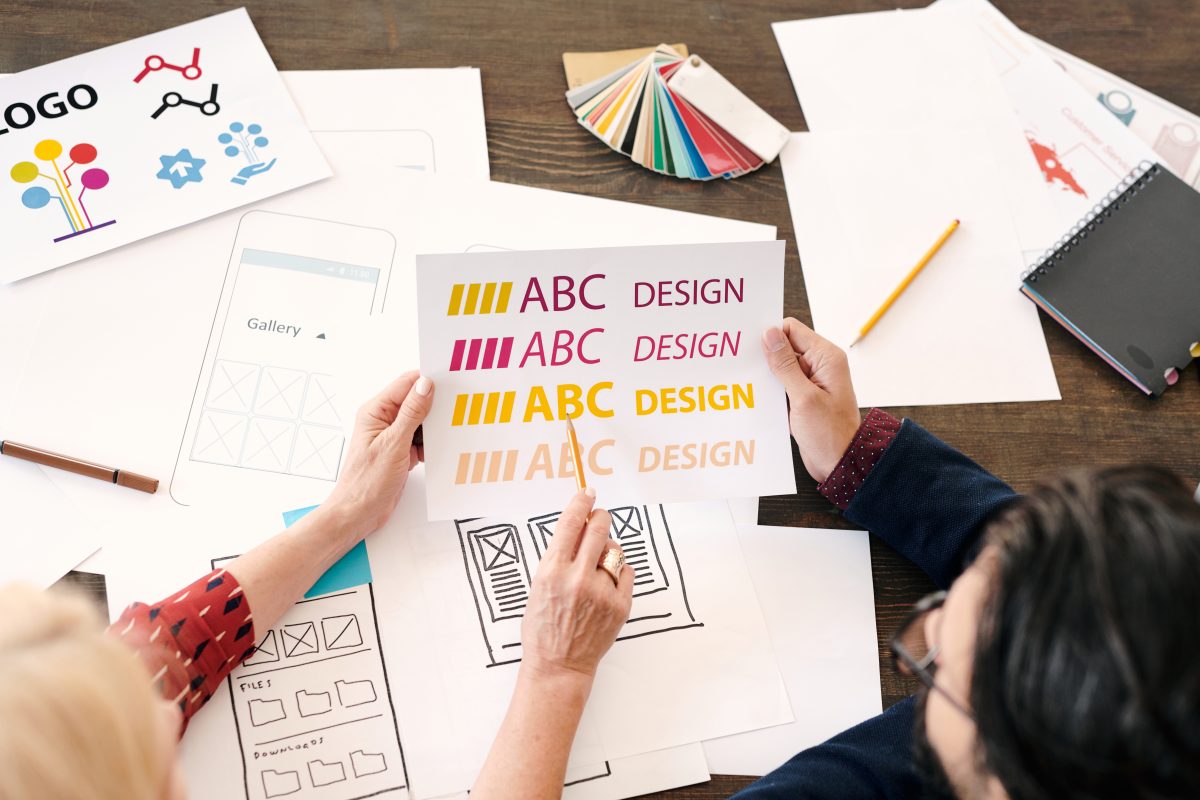Table of Contents

Typography in web design is more than just choosing fonts—it’s a critical element that directly influences how users perceive your website and how much they trust your brand. When used effectively, typography can enhance user experience (UX), guide visitors through your content, and establish a strong, credible online presence.
In this post, we’ll explore how typography in web design shapes usability, readability, trust, and branding—and how thoughtful font choices can dramatically impact your website’s success.
Why Typography in Web Design Deserves More Attention
Typography in web design is more than a visual choice—it’s a functional one. It affects how users read, process, and navigate your content. Thoughtful font choices improve readability, reinforce your brand identity, and create a smoother user experience across all devices.
When typography is inconsistent or hard to read, it can cause users to lose trust or leave your site entirely. Prioritising clear, well-structured typography ensures your message is delivered effectively while also enhancing credibility and engagement.
First Impressions Count
Your website has less than 5 seconds to make a first impression. If your typography looks outdated, hard to read, or cluttered, users might assume your business is unprofessional or untrustworthy—even before reading a single word.
Strong typography in web design instantly signals credibility, clarity, and attention to detail—qualities that encourage trust and engagement.
Typography in Web Design and User Experience (UX)
The user experience of your site relies heavily on typography. Every piece of content—headings, body text, buttons, labels—depends on clear and accessible typography to function properly.
1. Readability and Legibility
Readable typography ensures users can comfortably engage with your content. Fonts should be easy on the eyes and consistent across screen sizes and devices.
Best practices for readable typography in web design include:
- Choosing sans-serif fonts like Open Sans or Roboto for clean readability
- Using a base font size of 16–20px for desktops and 14–18px for mobile
- Keeping line heights between 1.5–1.8
- Limiting each line of text to around 50–75 characters
Proper contrast also supports accessibility. The Web Content Accessibility Guidelines (WCAG) recommend a contrast ratio of 4.5:1 or higher for body text.
2. Hierarchy and Visual Structure
Establishing a clear typographic hierarchy is essential to guide users through your content. With well-defined font sizes and styles, you help readers scan, understand, and retain information more effectively.
Typography Hierarchy Example:
- H1: Main Title – 36px, bold
- H2: Section Headings – 28px, semi-bold
- H3: Subheadings – 22px, medium
- Body Text: 18px, regular weight
This structured approach to typography in web design boosts usability and supports information architecture.
How Typography in Web Design Builds Trust
Typography is one of the subtle signals your website sends to users. Good typography helps establish emotional and psychological trust in your brand.
Professionalism and Credibility
Typography choices convey tone and professionalism. For instance, sloppy kerning, mismatched fonts, or inconsistent heading styles can signal a lack of attention to detail.
On the flip side, thoughtful typography communicates reliability and competence. This is especially important for brands in industries like finance, health, and tech, where trust is critical.
Emotional Impact
Typography affects how your brand is emotionally perceived. Serif fonts, for instance, convey tradition and authority. Sans-serif fonts feel more modern and approachable. Custom display fonts can add personality—but must be used sparingly and appropriately.
Typography in web design communicates tone before users even read the content, influencing how they feel about your brand from the start.
Responsive Typography for Mobile Users
With more than half of web traffic coming from mobile devices, responsive typography in web design is crucial. If your fonts don’t adjust gracefully across devices, you risk alienating users with poor readability.
Best Practices for Mobile Typography:
- Use relative font units like
emorreminstead of fixed pixels - Avoid ultra-thin font weights that don’t render well on small screens
- Add sufficient line spacing and padding for better readability
Typography and Website Performance
Typography choices also affect your site’s performance. Using multiple custom fonts, for example, can slow load times—which not only frustrates users but also hurts SEO.
How to Optimise Typography in Web Design:
- Limit font families to 1–2 per site
- Load fonts efficiently using Google Fonts or by hosting locally
- Minimise font file sizes with formats like WOFF2
- Combine font weights into fewer requests to reduce page load delays
Tools like Google Fonts offer fast-loading, performance-optimized typography options for web designers.
How Pressific Supports Strong Web Typography
At Pressific, we prioritise usability, design clarity, and brand consistency. We know that typography in web design isn’t just a matter of style—it’s a vital tool that drives engagement, readability, and trust.
Our approach ensures every font, heading, and spacing choice works together to support your digital goals.
Final Thoughts: Make Typography a Priority
Typography in web design has a direct impact on how people perceive your website, interact with your content, and decide whether to trust your brand. It’s an often-overlooked detail that makes a massive difference in performance and perception.
Whether you’re creating a new website or refining an existing one, investing in thoughtful, accessible typography is a smart and strategic move.
Looking to improve your typography in web design and create a more trusted digital experience?
Let’s talk at Pressific.






